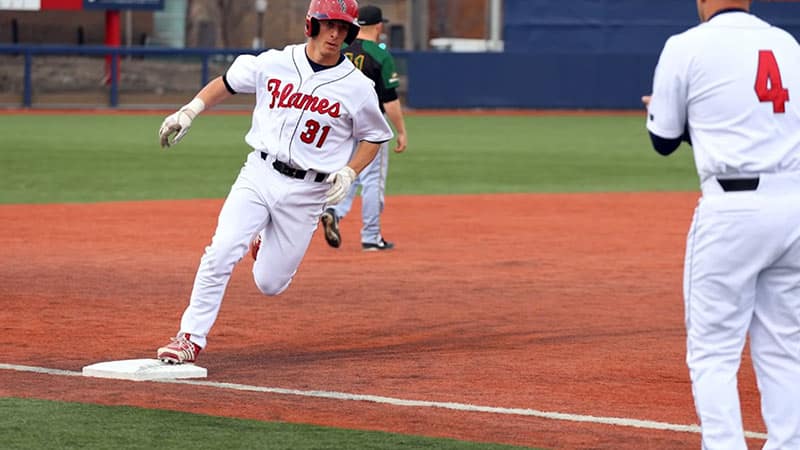What is PO in baseball ? In the realm of baseball, a sport steeped in tradition and statistics, the numbering system for positions is not just a method of organization but a language in its own right. It’s a shorthand that encapsulates strategy, player roles, and the very history of the game. So when someone asks, “What is PO in baseball?” they’re uncovering the tip of an iceberg that represents the game’s intricate blend of art and science. Through this exploration, we’ll dive deep into the essence of each position, the players who immortalize them, and the numbers that serve as their badges of honor.
Understanding PO in baseball
Learn the numbers and roles of baseball positions.
– What is PO in baseball?
– PO stands for “putout,” which is a fielder’s act of recording an out, such as catching a fly ball or tagging a runner.
– What are the basic baseball positions?
– The basic positions include pitcher, catcher, first baseman, second baseman, third baseman, shortstop, left fielder, center fielder, and right fielder.
– What is the role of the designated hitter (DH) in baseball?
– The designated hitter (DH) is a player who bats in place of the pitcher without playing a defensive position.
The Basics of Putout
Baseball, unlike many other team sports, assigns specific numbers to positions for a reason that goes beyond mere identification. This system, deeply ingrained in the sport’s fabric, serves as a universal language that transcends linguistic barriers, allowing players, coaches, and fans worldwide to speak baseball with numbers. The positions, numbered 1 through 9, correspond to the pitcher, catcher, first baseman, second baseman, third baseman, shortstop, left fielder, center fielder, and right fielder, respectively. Each position demands unique skills and attributes, playing a critical role in the team’s defensive strategy.
The concept of positions in baseball is not merely about where a player stands on the field but about the responsibilities and expectations tied to these roles. From the agile shortstop to the powerful first baseman, each position carries a legacy of great players who have defined what it means to excel in these roles. The number system simplifies communication, especially crucial in a game where split-second decisions can mean the difference between victory and defeat.
Related: How to Tape a Baseball Bat
The Numbers of the Putout
- Pitcher (1): The commander on the field, dictating the game’s pace and engaging in a cerebral battle with the batter.
- Catcher (2): The field general with a comprehensive view of the field, guiding pitchers through the game’s tactical nuances.
- First Baseman (3): The cornerstone of the infield defense, often the team’s power hitter.
- Second Baseman (4): Agile and quick, a pivotal figure in turning double plays and covering the vast middle ground.
- Third Baseman (5): The “hot corner” guardian, requiring fast reflexes and a strong arm.
- Shortstop (6): The infield’s anchor, combining agility, intelligence, and a powerful arm to cover a wide range of territory.
- Left Fielder (7), Center Fielder (8), Right Fielder (9): Each with unique responsibilities, these outfielders must cover extensive ground, possess strong throwing arms, and exhibit keen situational awareness.
This numerical system, while seemingly straightforward, carries with it the weight of strategy and historical significance. Each number is a symbol, a representation of both the role’s demands and its contributions to the game’s storied past.

The Roles of the Putout
The Importance of Versatility in Baseball Positions
As a young baseball player, I started out as a dedicated third baseman. However, as I progressed in my career, I quickly realized the value of being versatile in different positions. One game, our team’s second baseman got injured, and I was asked to step in and cover the position. This experience not only taught me the importance of adaptability but also gave me a deeper understanding of the roles and responsibilities of each position on the field.
It’s crucial for players to appreciate the demands of various positions and be prepared to step in wherever the team needs them. This firsthand experience helped me grasp the significance of versatility in baseball and how it contributes to the overall success of the team.
Pitcher
The pitcher, marked as ‘1’, is the linchpin of the team’s defense, a role that marries athleticism with psychological warfare. Mastery over an arsenal of pitches and the ability to outthink the batter are the hallmarks of a great pitcher. Personal experience has taught me that the pitcher’s mound can be a lonely place, a battleground where games are often won or lost based on the pitcher’s resilience and strategic thinking.
Insider Tip: A pitcher’s effectiveness isn’t just in the speed of the fastball but in the variation of pitch types and the ability to read the batter’s intentions.
Catcher
Behind every great pitcher is an astute catcher, wearer of the ‘2’. This position demands a blend of physical toughness and sharp mental acuity. Catchers are the field’s strategists, tasked with calling pitches and positioning the defense. My first experience donning the catcher’s gear revealed to me the exhaustive nature of this role, serving as the team’s backbone, enduring long games, and countless pitches, all while maintaining a high level of strategic thought.
Insider Tip: The catcher-pitcher relationship is pivotal; trust and understanding between the two can elevate a team’s defensive play significantly.
First Baseman
The first baseman, marked by the number ‘3’, is often seen as the powerhouse of the infield. With responsibilities that range from fielding ground balls to catching fly balls and making crucial plays at first base, the first baseman must combine agility with strength. My admiration for first basemen grew as I witnessed their ability to stretch and scoop, turning potential errors into outs, and their prowess at the plate, often hitting for both average and power.
Second Baseman
Sporting the number ‘4’, the second baseman is the infield’s swift, agile player, crucial for turning double plays and fielding ground balls. The role requires quick reflexes, a strong arm, and a deep understanding of game strategy. From personal experience, playing second base is about anticipation, knowing where to be before the ball is hit, and always being ready to cover more ground than seems possible.
Third Baseman
The ‘5’ on the field, the third baseman, guards the “hot corner,” where lightning-fast reflexes are a necessity due to the proximity to the batter. This position demands a player with a strong arm to make long throws across the diamond and the bravery to field hard-hit balls. Playing third base is about courage and quick thinking, reacting in a split second to snag a line drive or dive for a grounder.
Shortstop
The shortstop, identified by ‘6’, is often considered the infield’s captain. This role combines the agility of a second baseman with the robust arm of a third baseman, covering the area between second and third base. My experiences alongside shortstops have shown me their role as the infield’s linchpin, coordinating plays and often making spectacular outs with their range and arm strength.
Left Fielder
Marked with the number ‘7’, the left fielder must possess a combination of speed and accurate throwing ability. The challenges of playing left field are unique, from dealing with balls hit down the line to covering the vast expanse of the outfield. My time in left field was a testament to the importance of quick decision-making and the ability to read the ball off the bat.
Center Fielder
The center fielder, wearing ‘8’, is the outfield’s general, tasked with covering the most ground and often possessing the strongest arm. This position requires speed, intuition, and leadership, as the center fielder often directs the other outfielders. My respect for center fielders stems from their role as the last line of defense, making game-saving catches and being a crucial part of the team’s offense.
Right Fielder
Donning the number ‘9’, the right fielder needs a powerful arm to make long throws to third base or home plate. The position demands not just physical abilities but also a strategic mind to anticipate batter tendencies. Playing right field taught me the value of patience and precision, waiting for the play to come to you but being ready to unleash a powerful throw at a moment’s notice.

Related :What is Slugging Percentage in Baseball Explained
The Designated Hitter (DH)
The Designated Hitter, a role without a traditional field position number, embodies the evolution of baseball strategy. By allowing a player to bat in place of the pitcher without taking the field defensively, the DH adds a layer of tactical depth to the game. This role emphasizes the importance of batting prowess, changing the dynamic of the game, especially in leagues that adopt the DH rule.
In conclusion, the numbers and roles of baseball positions offer a fascinating lens through which to view the game. They encapsulate the blend of individual skill and team strategy that makes baseball a compelling sport. From the pitcher’s mound to the outfield depths, each position carries its unique challenges and contributions to the game. As we’ve explored these roles, it’s clear that baseball is more than a game of numbers; it’s a dance of strategy, skill, and passion, played out on a field of dreams.

Whether you’re a seasoned player or a newcomer to the sport, understanding the nuances of baseball positions and their numbers enriches the viewing experience, offering insights into the game’s strategic depths. Baseball, with its rich history and complex strategies, continues to captivate and challenge players and fans alike, proving that within its numbers lies a story of human endeavor and excellence.
Related: How to oil a baseball Glove?
What is PO in baseball FAQs
Q: What is a PO in baseball?
A: A PO in baseball refers to a putout, which is when a defensive player records an out.
Q: Who can make a PO in baseball?
A: Any defensive player on the field can make a PO in baseball, including infielders, outfielders, and catchers.
Q: How is a PO recorded in baseball?
A: A PO is recorded when a defensive player catches a batted ball before it hits the ground, tags a baserunner, or fields a ground ball and steps on the base for a force out.
Q: Isn’t a PO the same as a strikeout?
A: No, a PO (putout) is different from a strikeout. A putout is a defensive play, while a strikeout is a result of a pitcher retiring a batter by throwing three strikes.
Q: What happens after a defensive player makes a PO?
A: After a defensive player makes a PO, the play is recorded in the scorebook, and the game continues with the next batter or play.
